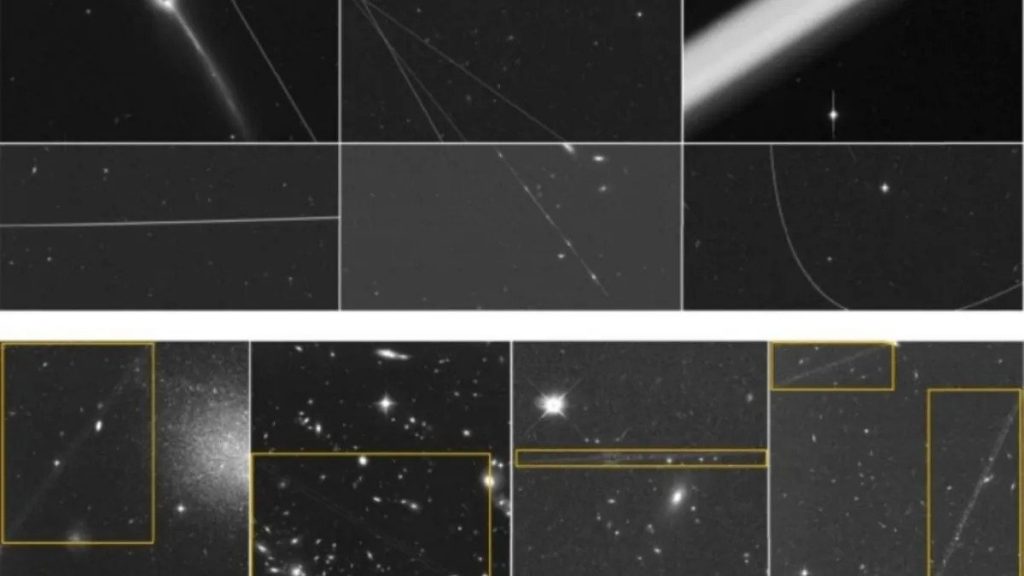The deployment of broadband satellite constellations, such as Starlink, is causing concerns among the international astronomy community. The increasing number of satellites in Earth’s orbit is threatening astronomical viewing using ground-based observatories.
A team of astronomers has demonstrated that even the Hubble Space Telescope cannot solve this satellite issue. These worries are already affecting Hubble, and their impact is expected to grow in the upcoming years.
Sandor Kruk, a research scientist at the Max Planck Institute for Extraterrestrial Physics, led a study published in Nature Astronomy. The article, titled “The impact of satellite trails on Hubble Space Telescope observations,” details the effect of satellites on Hubble’s Low-Earth Orbit astronomical investigations.
Hubble’s orbit is progressively degrading due to drag, causing it to become more sensitive to the increasing number of satellites in Earth’s orbit. The authors used machine learning and citizen scientists to analyze 20 years of Hubble pictures and found that satellite traces were present in 2.7 percent of the photos from that era.
The scientists identified 144 photos with multiple satellite trails, with most photos having two trails.
Given the 11-minute exposure time of Hubble photos, the likelihood of satellite trails increases as more satellites are launched into orbit.
Hubble was deployed in 1990 at 340 miles (547 km) from Earth and has since shrunk to only 333 miles (538 km), affecting its position, angle, and pointing, all of which impact its sensitivity to satellites.
Scientists estimated the probability of satellite traces in any Hubble image was taken since 2009, based on available information. The graph that follows shows two picture groupings: the Wide Field Camera 3 Ultraviolet channel and the Advanced Camera for Surveys (ACS)/Wide Field Camera (WFC), with an exposure duration of 11.2 minutes.
The likelihood of spotting a satellite trace in the pictures has increased by 59 percent and 71 percent, respectively, indicating the growing impact of satellites on astronomy. Thus it has become necessary to find a solution to minimize the impact of satellites on astronomical observations
Scientists and industry leaders must work together to develop methods to mitigate the effects of satellites on astronomical research while maintaining their benefits to society. While acknowledging the usefulness of satellites, their impact on astronomy needs to be discussed.

